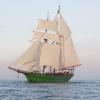-
Posts
3,025 -
Joined
-
Last visited
About kurtvd19

Profile Information
-
Gender
Male
-
Location
Far West Chicago Suburbs
Recent Profile Visitors
-
 cotrecerf reacted to a post in a topic:
Model Machines LLC – Byrnes Model Machines - All machines to be back in production soon.
cotrecerf reacted to a post in a topic:
Model Machines LLC – Byrnes Model Machines - All machines to be back in production soon.
-
Not the other day, but when I talked with Donna a few weeks back she gave me the name of a guy looking for a rope walk that contacted her using the contact us option. I don't know if she looks at it every day, but it does get looked at. She most likely has your name on the list for whatever you used the form for.
-
 kurtvd19 reacted to a post in a topic:
Chris Watton and Vanguard Models news and updates Volume 2
kurtvd19 reacted to a post in a topic:
Chris Watton and Vanguard Models news and updates Volume 2
-
 Ryland Craze reacted to a post in a topic:
Model Machines LLC – Byrnes Model Machines - All machines to be back in production soon.
Ryland Craze reacted to a post in a topic:
Model Machines LLC – Byrnes Model Machines - All machines to be back in production soon.
-
Use the "CONTACT US" feature on the web site. She has no stock and I looking to see who wants what when available. When you say extension table to you mean the larger table top? It is a replacement for the stock top that comes with the saw and includes the fence to fit the larger table top. I talked to Donna on Wednesday and she does monitor the website Contact Us area. Kurt
-
 kurtvd19 reacted to a post in a topic:
Trireme Olympias by Richard Braithwaite
kurtvd19 reacted to a post in a topic:
Trireme Olympias by Richard Braithwaite
-
 kurtvd19 reacted to a post in a topic:
Billy 1938 by Keith Black - 1:120 Scale - Homemade Sternwheeler
kurtvd19 reacted to a post in a topic:
Billy 1938 by Keith Black - 1:120 Scale - Homemade Sternwheeler
-
 thibaultron reacted to a post in a topic:
Billy 1938 by Keith Black - 1:120 Scale - Homemade Sternwheeler
thibaultron reacted to a post in a topic:
Billy 1938 by Keith Black - 1:120 Scale - Homemade Sternwheeler
-
 Ryland Craze reacted to a post in a topic:
Billy 1938 by Keith Black - 1:120 Scale - Homemade Sternwheeler
Ryland Craze reacted to a post in a topic:
Billy 1938 by Keith Black - 1:120 Scale - Homemade Sternwheeler
-
 kurtvd19 reacted to a post in a topic:
Billy 1938 by Keith Black - 1:120 Scale - Homemade Sternwheeler
kurtvd19 reacted to a post in a topic:
Billy 1938 by Keith Black - 1:120 Scale - Homemade Sternwheeler
-
 kurtvd19 reacted to a post in a topic:
Billy 1938 by Keith Black - 1:120 Scale - Homemade Sternwheeler
kurtvd19 reacted to a post in a topic:
Billy 1938 by Keith Black - 1:120 Scale - Homemade Sternwheeler
-
 vvvjames reacted to a post in a topic:
Billy 1938 by Keith Black - 1:120 Scale - Homemade Sternwheeler
vvvjames reacted to a post in a topic:
Billy 1938 by Keith Black - 1:120 Scale - Homemade Sternwheeler
-
 Keith Black reacted to a post in a topic:
Billy 1938 by Keith Black - 1:120 Scale - Homemade Sternwheeler
Keith Black reacted to a post in a topic:
Billy 1938 by Keith Black - 1:120 Scale - Homemade Sternwheeler
-
 tmj reacted to a post in a topic:
Billy 1938 by Keith Black - 1:120 Scale - Homemade Sternwheeler
tmj reacted to a post in a topic:
Billy 1938 by Keith Black - 1:120 Scale - Homemade Sternwheeler
-
Just coming aboard a long way into this build. Very interesting as usual. I love the one of a kind builds you do Keith. As to the wrinkles at the top of the aft sign, I think they might be paint blisters almost ready to flake off. Can't be a fabric - the line through the name is a separation gap between two boards - in my opinion. Kurt
-
 tmj reacted to a post in a topic:
Good 'Hobby Quality' Metal Lathes
tmj reacted to a post in a topic:
Good 'Hobby Quality' Metal Lathes
-
 paul ron reacted to a post in a topic:
Good 'Hobby Quality' Metal Lathes
paul ron reacted to a post in a topic:
Good 'Hobby Quality' Metal Lathes
-

Good 'Hobby Quality' Metal Lathes
kurtvd19 replied to tmj's topic in Modeling tools and Workshop Equipment
The all metal Unimat that YT showed certainly isn't what you can buy today. That's the version I was always saving up for (1960 to 1965) but something else always was needed first. When I got back to modeling it was no longer available like it had been and I went in another direction and eventually got a Taig and then a Sherline. -
 kurtvd19 reacted to a post in a topic:
Trireme Olympias by Richard Braithwaite
kurtvd19 reacted to a post in a topic:
Trireme Olympias by Richard Braithwaite
-
 kurtvd19 reacted to a post in a topic:
Syren Ship Model Company News, Updates and Info.....(part 2)
kurtvd19 reacted to a post in a topic:
Syren Ship Model Company News, Updates and Info.....(part 2)
-
 kurtvd19 reacted to a post in a topic:
Syren Ship Model Company News, Updates and Info.....(part 2)
kurtvd19 reacted to a post in a topic:
Syren Ship Model Company News, Updates and Info.....(part 2)
-
 Some Idea reacted to a post in a topic:
Good 'Hobby Quality' Metal Lathes
Some Idea reacted to a post in a topic:
Good 'Hobby Quality' Metal Lathes
-

Good 'Hobby Quality' Metal Lathes
kurtvd19 replied to tmj's topic in Modeling tools and Workshop Equipment
I have owned both a Taig and a Sherline lathe. Both are excellent machines. The Taig will do all you want - the only reason I got the Sherline though was because the price was just about free - couldn't turn it down, but I can't do anything with the Sherline I can't do with the Taig. I am not a machinist and only a machinist can use a Sherline to it's full capacity. Kurt -

Surprisingly good and cheap mini tools
kurtvd19 replied to Johnny Mike's topic in Modeling tools and Workshop Equipment
What is the brand and where did you purchase it? Also, did you make the disc sander? If not who made it and where did you buy it? I can check out the sources and see if they are interested in becoming MSW sponsors. Take care, Kurt -
 kurtvd19 reacted to a post in a topic:
St Roch by Lecrenb - 1:48 scale - RCMP Schooner rigged as schooner c. 1930/35
kurtvd19 reacted to a post in a topic:
St Roch by Lecrenb - 1:48 scale - RCMP Schooner rigged as schooner c. 1930/35
-
Winners of the NRG's 2025 Photographic Ship Model Contest are listed below. The winning models will be featured in the Winter issue of the Nautical Research Journal due out in December. Look for photos here in January. 2025 Photo Contest Medal Winners Master’s Class GOLD Steve Anderson “Victory” Oceano, CA SILVER (Tied) Walter Zimmerman “Essex” State College, PA Ron Neilson “Camilla” Warrington, PA BRONZE William “Mike” McFadden “German Patrol Boat” Scottsdale, AZ Journeyman’s Class GOLD T. R. Mayer “Fort Valley” Brunswick, ME SILVER Richard Fernandez “L’Unite” Freehold, NJ BRONZE Dan Pacholski “Katy of Norfolk” South Elgin, IL Apprentice’s Class GOLD Matthew Bergman “Norwegian Sailing Pram” Alton, ON Canada SILVER Eamonn Bermingham “Ballahoo” Arklow, CO Wicklow, Ireland BRONZE Vaidas Guogis “Kurenkahn” Vilnius, Lithuania Best in Show Steve Anderson “Victory” Oceano, CA
-
Congratulations Keith. Another great build. Very realistic load on the barge. The two builds look good together. Can't wait for the next build. Kurt
- 457 replies
-
- sternwheeler
- Hard Coal Navy
-
(and 1 more)
Tagged with:
-
Mike: Donna promises that the quality will be the same. There is a guy currently working with Donna who was working with Jim and is looking good for taking over the business. We ship modelers as a group were very important to her & Jim and it's it's still very important to her to maintain availability of the tools as well as the quality of the tools and she will be closely involved until she is sure the company is maintaining the high standards and then she plans to retire.
-
The business will be able to produce and sell all their machines on or about January 1, 2026 according to Donna when I spoke to her on 10/9/2025. Currently available: 4” carbide blades with 24 and 36 teeth available for immediate sale. If you are sure you want a specific tool as soon as it is available send an email to the business email using the Contact Us link on the website https://www.byrnesmodelmachines.com Donna reminded me that the Rope Walk Machine will no longer be produced but that they have most of the small accessories for its operation available. Kurt
-
Roel: Do you have a build log of this barge? Kurt
- 457 replies
-
- sternwheeler
- Hard Coal Navy
-
(and 1 more)
Tagged with:
About us
Modelshipworld - Advancing Ship Modeling through Research
SSL Secured
Your security is important for us so this Website is SSL-Secured
NRG Mailing Address
Nautical Research Guild
237 South Lincoln Street
Westmont IL, 60559-1917
Model Ship World ® and the MSW logo are Registered Trademarks, and belong to the Nautical Research Guild (United States Patent and Trademark Office: No. 6,929,264 & No. 6,929,274, registered Dec. 20, 2022)
Helpful Links
About the NRG
If you enjoy building ship models that are historically accurate as well as beautiful, then The Nautical Research Guild (NRG) is just right for you.
The Guild is a non-profit educational organization whose mission is to “Advance Ship Modeling Through Research”. We provide support to our members in their efforts to raise the quality of their model ships.
The Nautical Research Guild has published our world-renowned quarterly magazine, The Nautical Research Journal, since 1955. The pages of the Journal are full of articles by accomplished ship modelers who show you how they create those exquisite details on their models, and by maritime historians who show you the correct details to build. The Journal is available in both print and digital editions. Go to the NRG web site (www.thenrg.org) to download a complimentary digital copy of the Journal. The NRG also publishes plan sets, books and compilations of back issues of the Journal and the former Ships in Scale and Model Ship Builder magazines.









